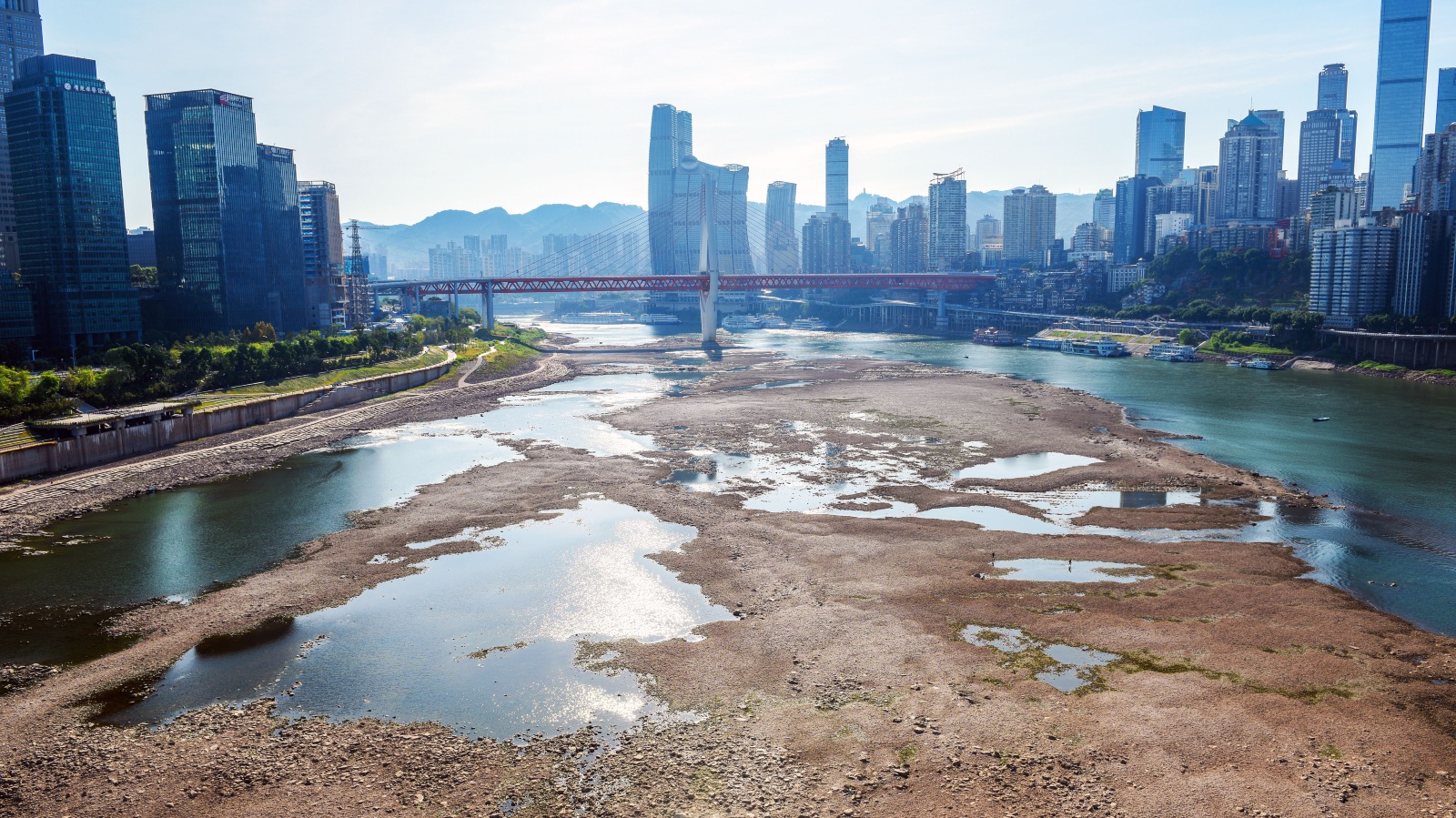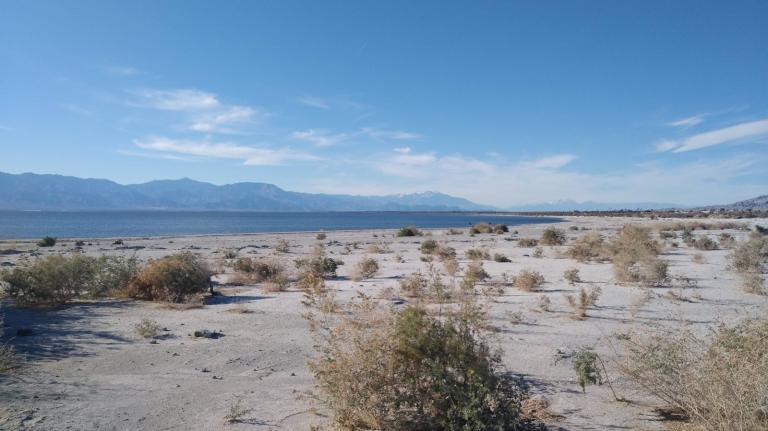This story is part of the Grist series Parched, an in-depth look at how climate change-fueled drought is reshaping communities, economies, and ecosystems.
A historic drought in the southwest of China is drying up rivers, intensifying forest fires, damaging crops, and severely curtailing electricity in a region highly dependent on hydropower.
The Yangtze River, the third largest in the world, has dropped to half its average water levels, affecting shipping routes, limiting drinking water supplies, causing rolling blackouts, and even exposing long-submerged Buddhist statues. Some 66 rivers across 34 counties in Chongqing were dried up as of last week, Reuters reported. Also last week, the province of Sichuan, which gets more than 80 percent of its energy from hydropower, cut or limited electricity to thousands of factories in an effort to “leave power for the people.” Poyang Lake, the largest freshwater lake in China, is just a quarter of its normal size for this time of year.
On Friday, China issued its first national drought alert in nine years. Rainfall in the Yangtze River Basin is down 45 percent from last July, the lowest it has been since 1961, according to Bloomberg. Simultaneously, a heat wave has caused scorching temperatures across large parts of the country since early July. Dozens of cities recorded temperatures over 104 degrees Fahrenheit last week; on Monday, state meteorologists issued a “red alert” heat warning for the 11th day in a row. The relationship between heat waves and drought is complicated, but it’s known that as temperatures go up, the sky’s evaporative demand increases, causing it to absorb more water and creating drier conditions on land.
Sichuan is a major manufacturing hub and the curbing of electricity to factories has had global impacts, affecting suppliers of Toyota, Volkswagen, Tesla, Intel and Apple, as well as pesticide and solar panel manufacturers. On Monday, companies were asked to continue rationing electricity until Thursday. Toyota has slowly resumed operations using a generator; Tesla asked the government of Shanghai to ensure that its suppliers received enough power, saying it faced shortages of components as plants scaled back production. Other areas that source power from Sichuan have also made cuts, including Shanghai, China’s largest city, which turned off decorative lighting as a symbolic gesture.
Drought’s impact on the agriculture sector has also been severe, with thousands of acres of crops damaged in Sichuan and the neighboring Hubei province, according to the Associated Press. In response, the Chinese government discharged water from several large upstream reservoirs, and the Ministry of Agriculture said it will try to artificially increase rainfall through cloud seeding, as well as spray crops with a water-retaining agent. Climbing temperatures means crops need even more water than usual, as soils dry out. Forest fires also broke out last week in Sichuan and neighboring Chongqing, although officials declared them contained as of Monday.
China is the largest carbon emitter in the world (though the United States is first when considering historic emissions) and the drought will likely impact the country’s clean energy goals. As reported in the Guardian, Vice-premier Han Zheng said the country will increase its coal burning to address the electricity shortages.
Other parts of the world are also struggling with changes in power-generating capacity brought on by drought. Hydropower is the largest source of clean energy in the world, but last year dry spells in places like the southwestern United States, China, and Brazil created significant disruptions in the supply, and the International Energy Agency predicts that global hydropower expansion will slow down this decade. Brazil, which in 2021 sourced 61 percent of its electricity from hydropower had to cut water flows into hydroelectric dams to a 91-year low during its drought that year. “People always thought that water is unlimited, but it really isn’t,” José Marengo, a climatologist at the Brazilian government’s disaster monitoring center, told Reuters.




